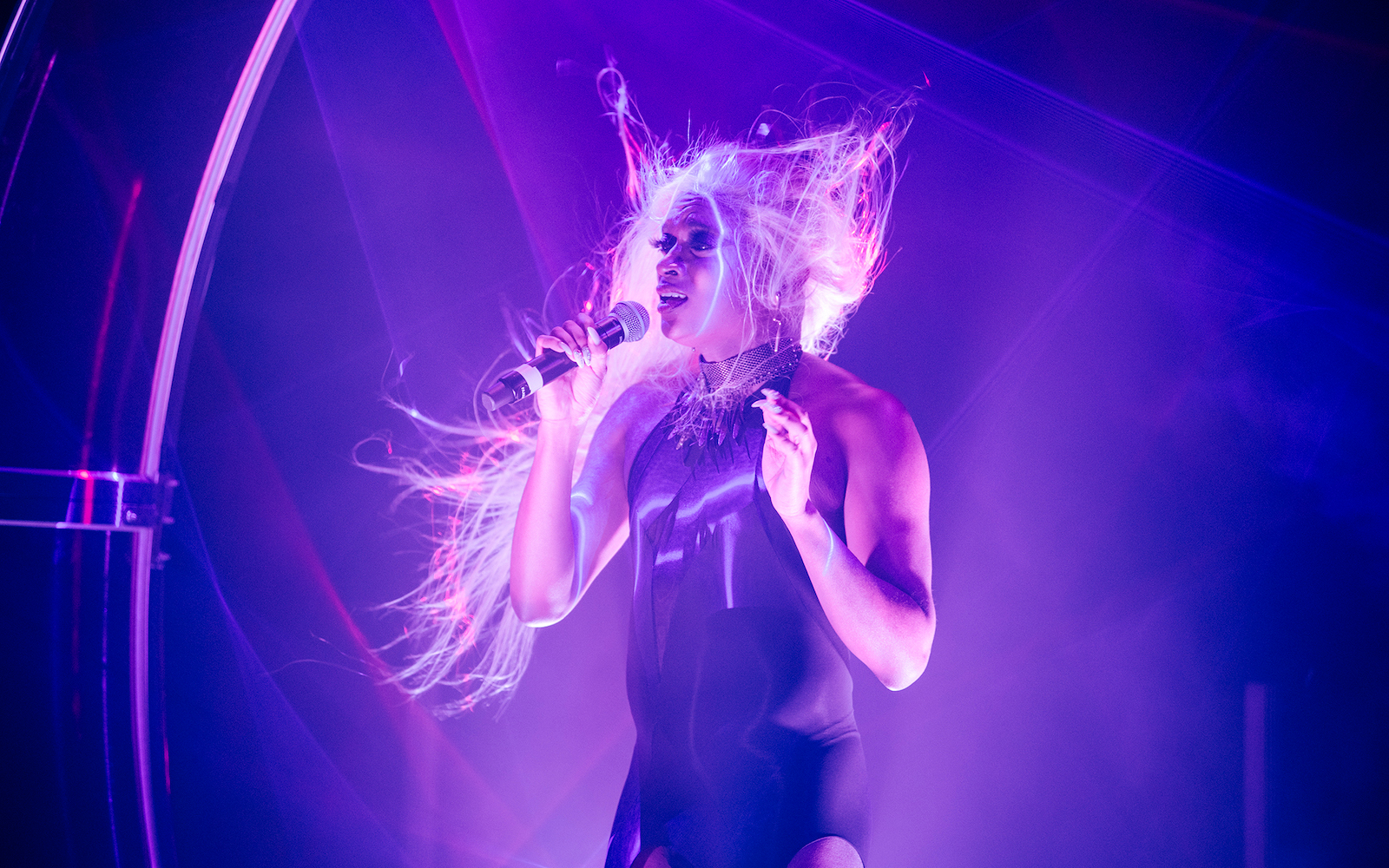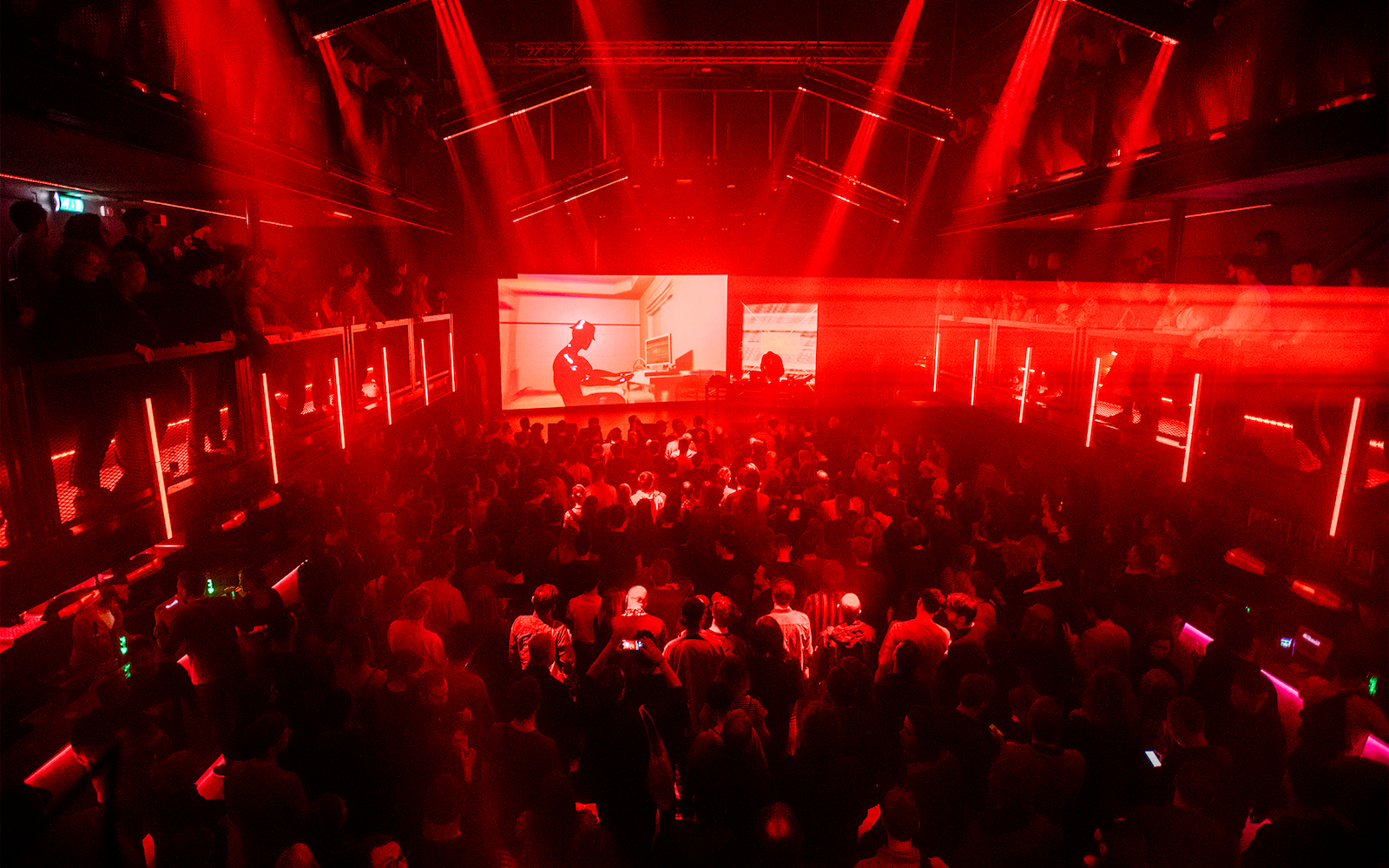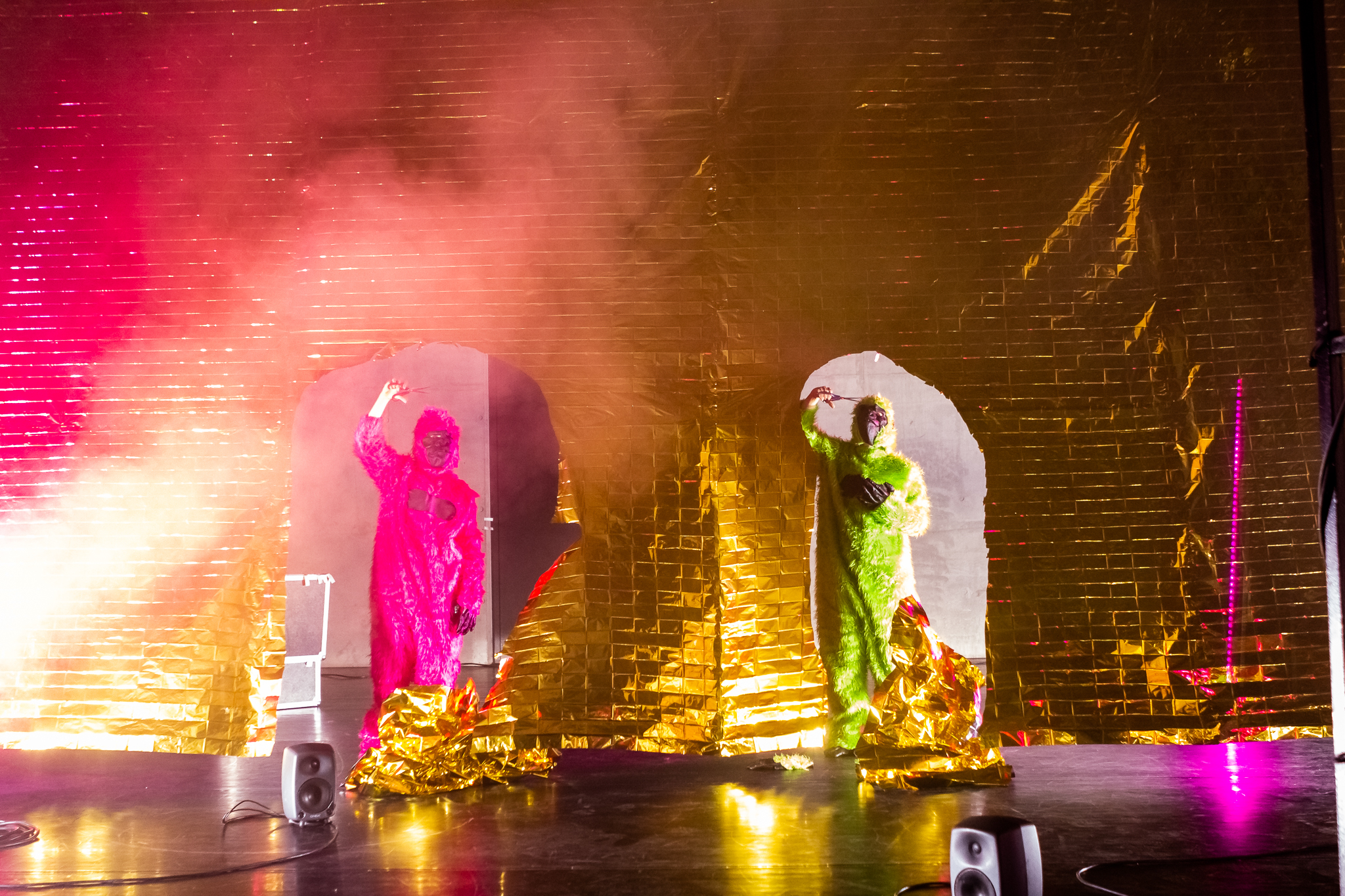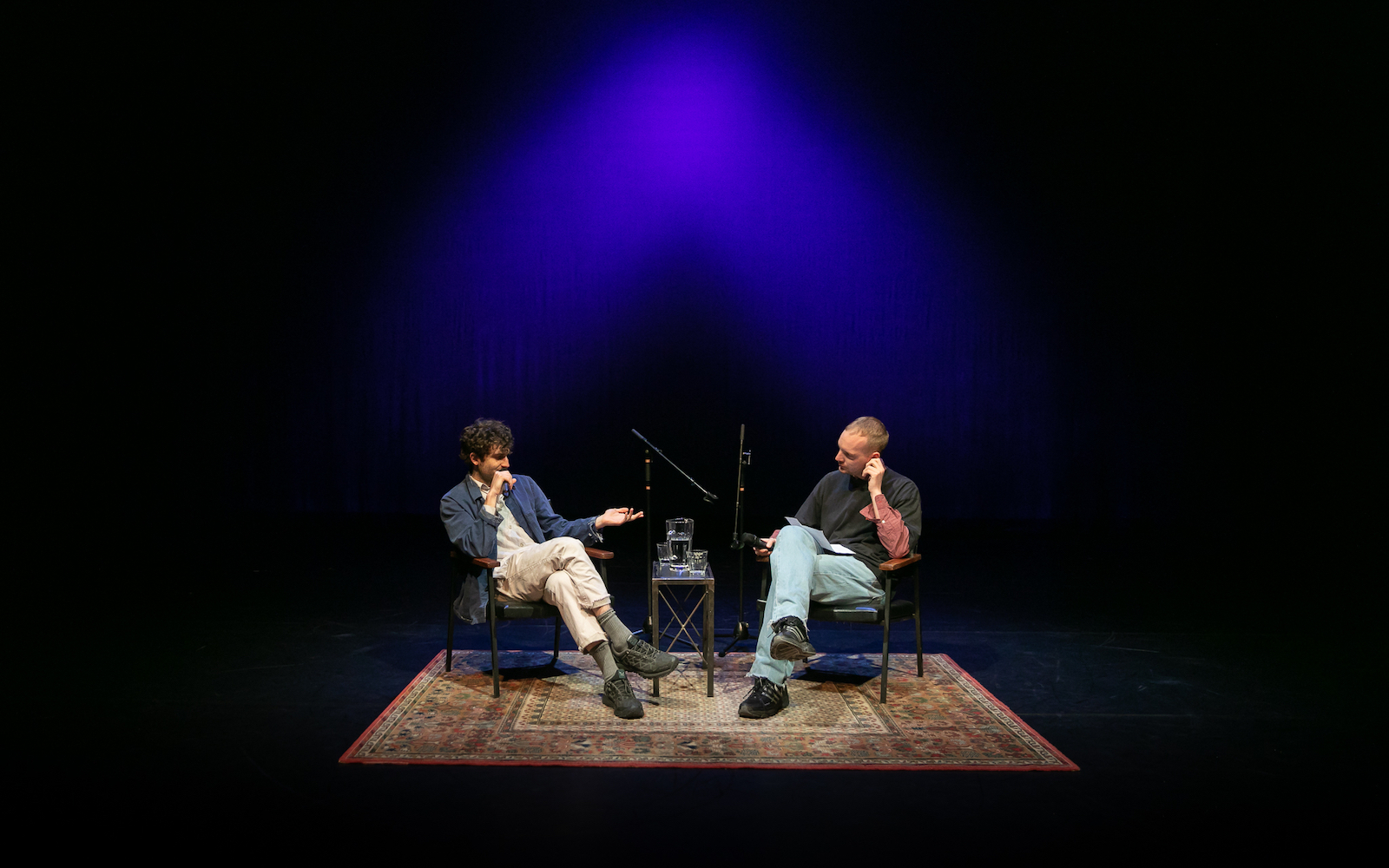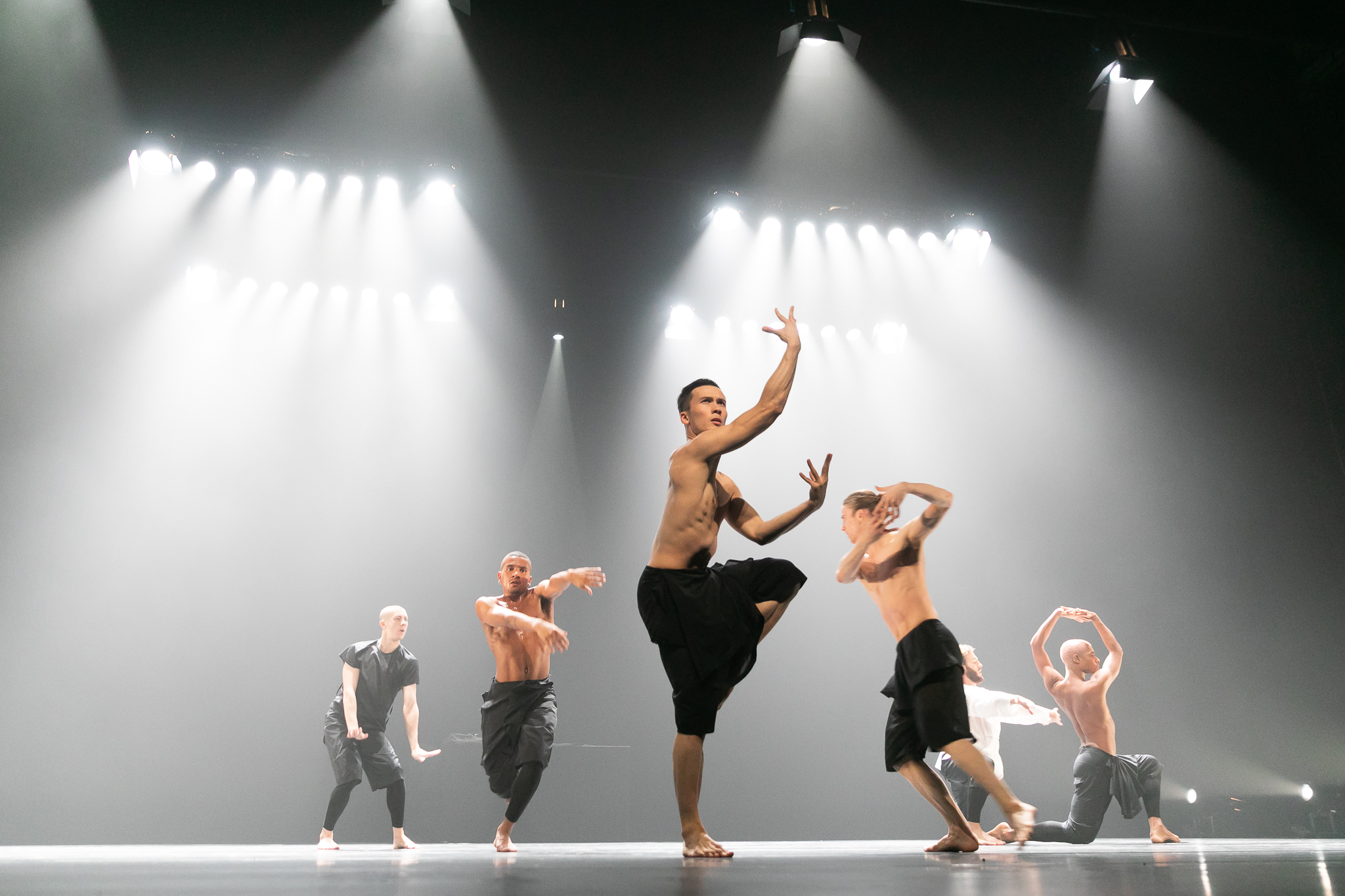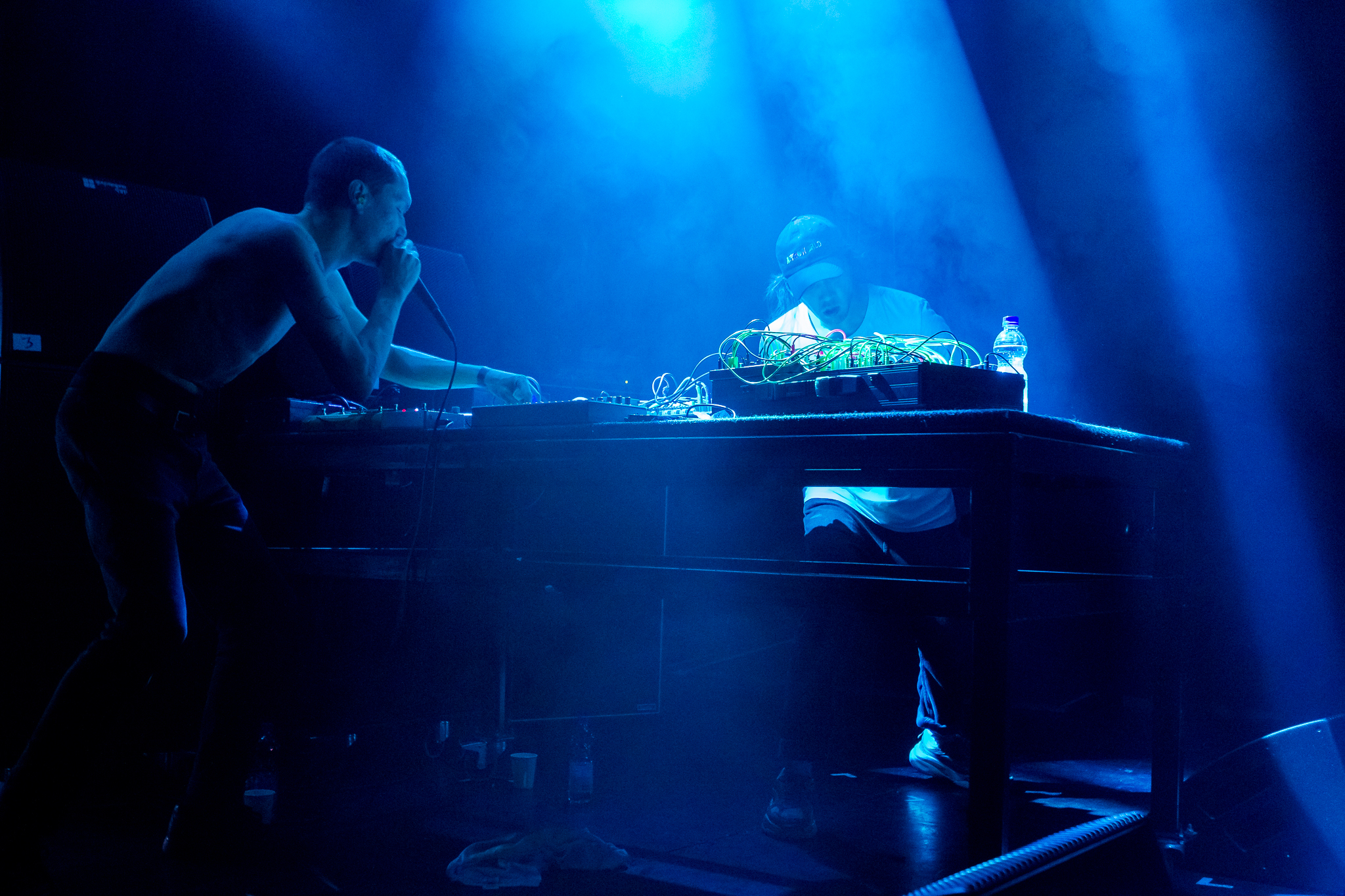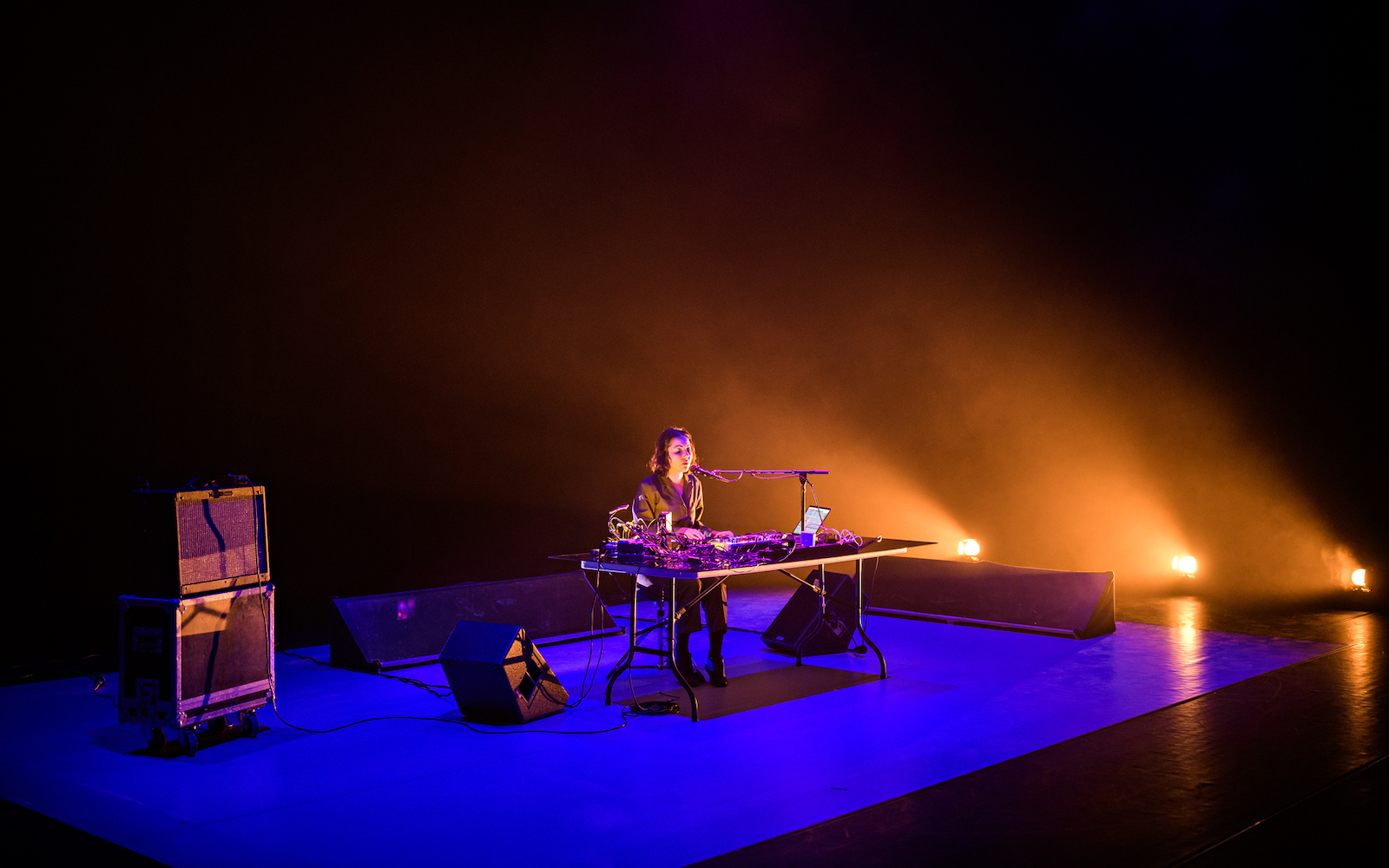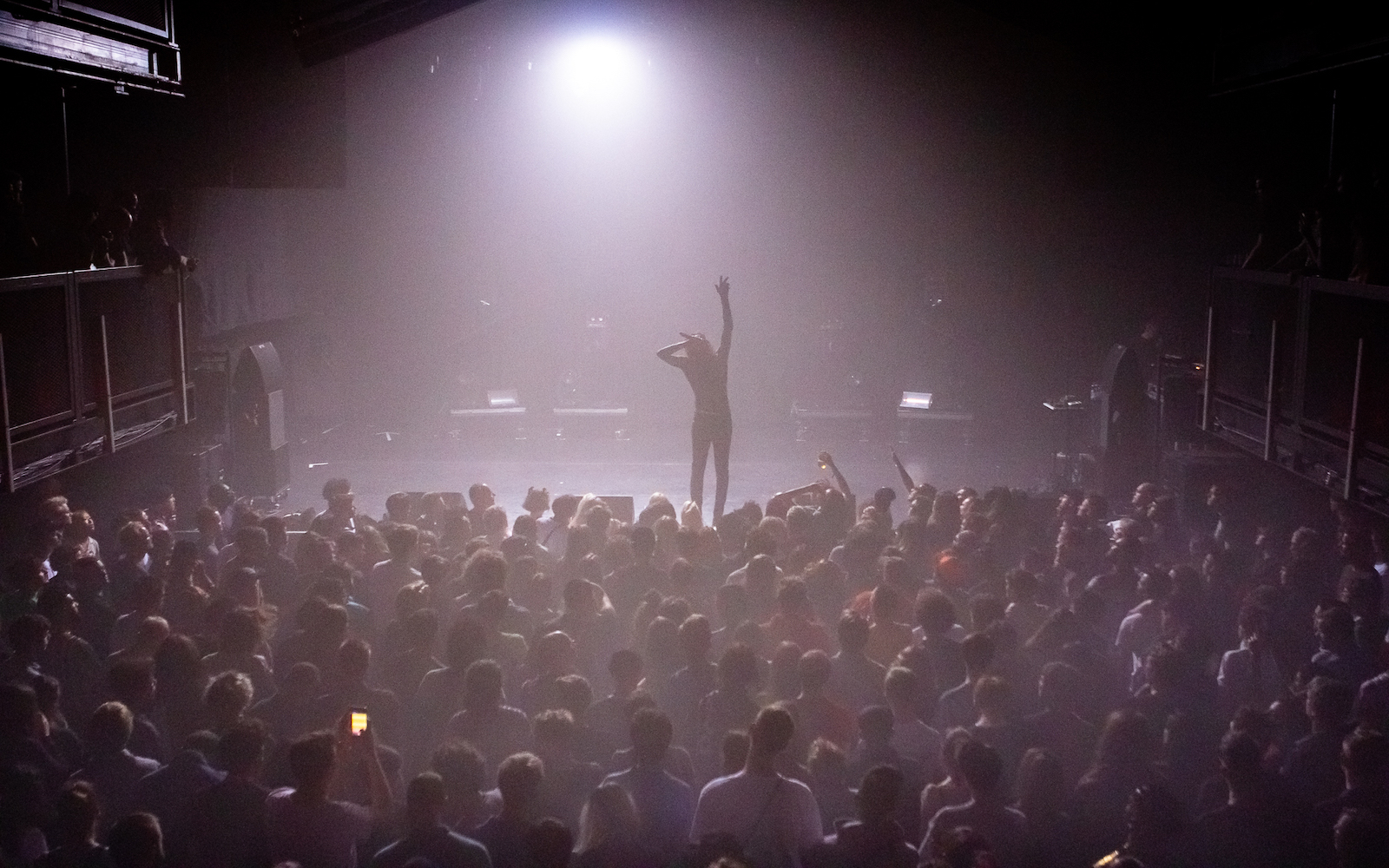Photo credits /
Jan Rijk - Lafawndah, Nicolas Jaar & Group, Nicolas Jaar Talk,
Stephan Kaffa - Otim Alpha, Mark Fell, Giant Swan, Yves Tumor
Rewire 2019: Five key performances
- GepubliceerdApr 3, 2019
- Woorden
- Carlos Hawthorn on why The Hague festival is well worth a visit.
- Delen
- Before last weekend's trip to The Hague, I had always imagined it as a drab and austere place, a city of politics, skyscrapers and world-renowned criminal trials. That couldn't be further from the truth. In many ways—canals, cute streets, charming architecture—it feels like Amsterdam, though it also has its own quirks, not least the seaside, which was glazed in a beige fog when I visited on Saturday afternoon. I was in town for Rewire, a three-day exhibition of cutting-edge electronic music, plus plenty more besides. Any inner-city festival experience is greatly enhanced when the location is a world unto its own.
Rewire, which just celebrated nine years as one of the few remaining independent music festivals in the Netherlands, is itself a world unto its own. With dozens of performances, talks, workshops, film screenings and tech showcases spread across three days and more than ten venues, it can feel like a daunting task on paper. But in reality it was a breeze, partly because the venues are comically close together and partly because nearly all the music I saw was in some way provocative, riveting or inspiring. Rarely have I enjoyed so much choice in such a concentrated area. The only downside was not being able to be in three places at once.
Here are five key performances from the weekend.
Lafawndah Something you quickly learn at Rewire: take heed of the festival's advice and get to shows early. On Friday evening, the foyer at Paard, a bustling complex home to two of the main venues, was a tangle of people checking coats, buying drinks and flicking through records. In the midst of it all, a couple DJs played house at low volume. Eventually, I was ushered upstairs into the smaller space, Paard II, where Lafawndah was getting expressive in front of a packed audience. Backed by a drummer, who thumped out complex rhythms over recordings of the tunes, she rocked back and forth, flailing her hair, strutting across every inch of the small stage. Her music, a style of experimental, vocal-led R&B that recalls Kelela, sounded rich and raw—the excellent "Daddy" was a highlight. "This set is specially dedicated to two people," she said before leaving. "Scott Walker and Agnes Varda."
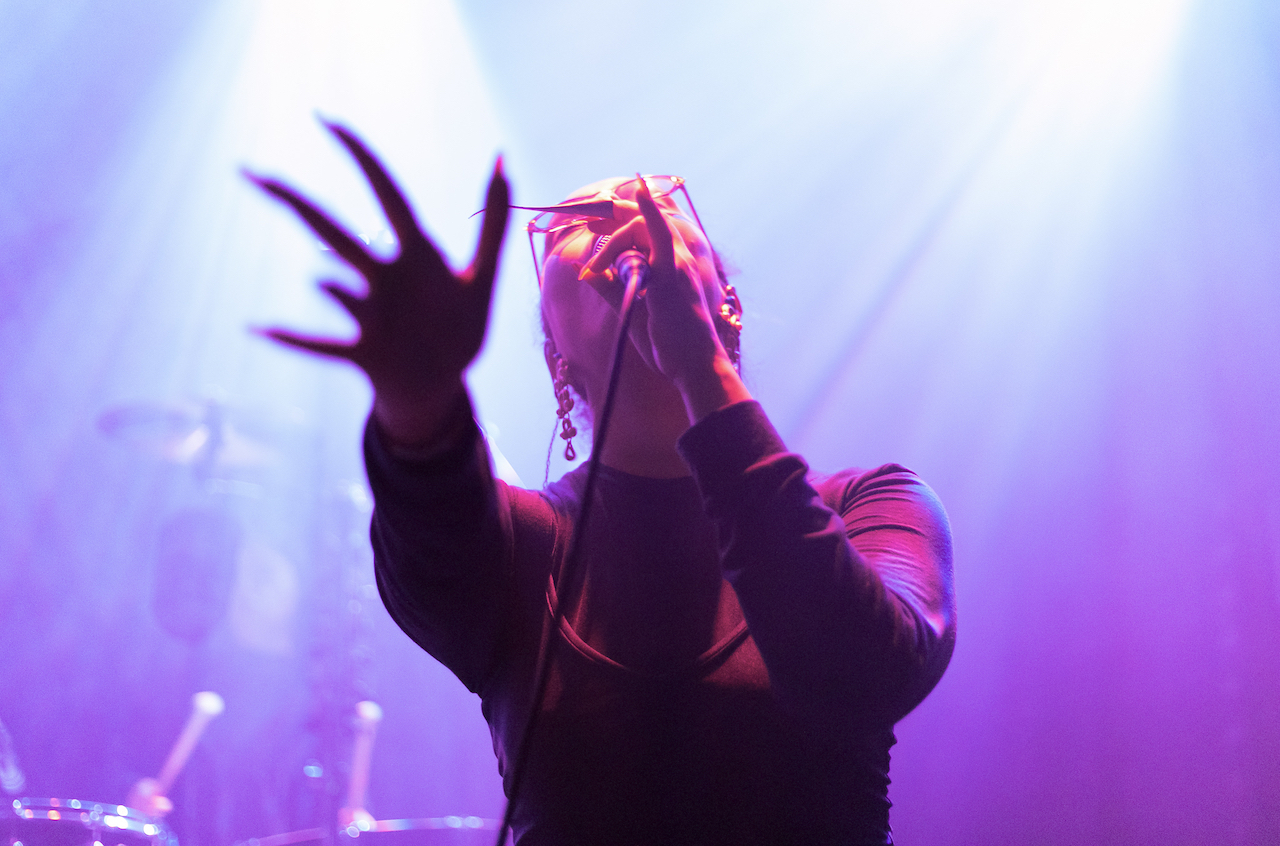 Otim Alpha For the first 20 minutes or so of his performance, the Nyege Nyege artist Otim Alpha sat strumming an adungu, a harp-like instrument that originates in northwestern Uganda. The tones were upbeat yet soothing. Behind him to the left, his DJ, Leo P'layeng, stood motionless in a striking white-feather headpiece. The crowd looked on silently. In an instant, everything changed. Alpha leapt up, ditched the adungu, and began bouncing from foot to foot. P'layeng, too, sprang into action, unleashing 170-BPM electro acholi, a highly danceable style of Ugandan music with hectic rhythms. Pan-pipes weaved in and out of Alpha's infectious vocals. Soon, he was topless, tassels flailing from his head and upper-arm, pogoing between dozens of audience members, who had rushed the stage at his request. "Some more, some more, some more" he chanted, as everyone cut flailing shapes in an attempt to match his energy. Paard II can rarely have played host to such unbridled joy.
Otim Alpha For the first 20 minutes or so of his performance, the Nyege Nyege artist Otim Alpha sat strumming an adungu, a harp-like instrument that originates in northwestern Uganda. The tones were upbeat yet soothing. Behind him to the left, his DJ, Leo P'layeng, stood motionless in a striking white-feather headpiece. The crowd looked on silently. In an instant, everything changed. Alpha leapt up, ditched the adungu, and began bouncing from foot to foot. P'layeng, too, sprang into action, unleashing 170-BPM electro acholi, a highly danceable style of Ugandan music with hectic rhythms. Pan-pipes weaved in and out of Alpha's infectious vocals. Soon, he was topless, tassels flailing from his head and upper-arm, pogoing between dozens of audience members, who had rushed the stage at his request. "Some more, some more, some more" he chanted, as everyone cut flailing shapes in an attempt to match his energy. Paard II can rarely have played host to such unbridled joy.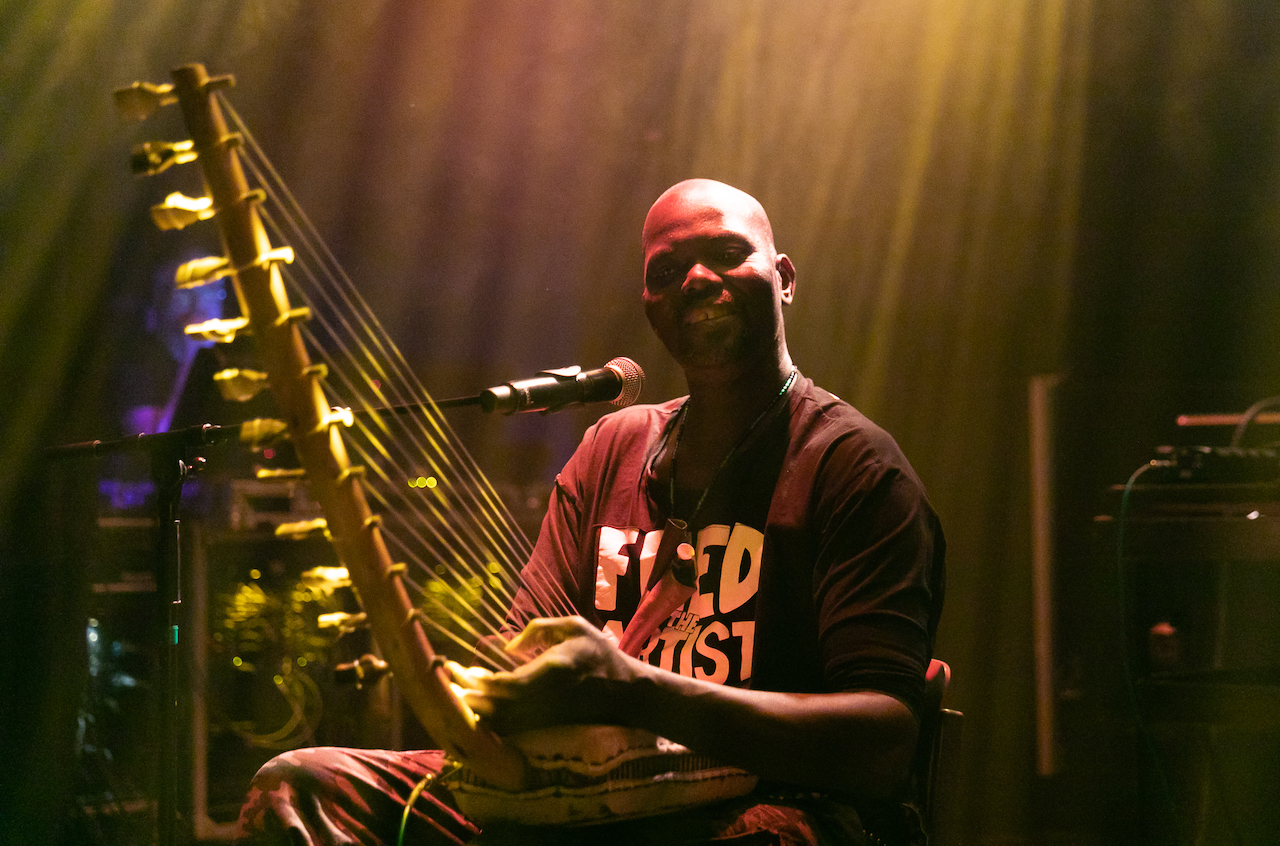 CURL "Work hard and murk fast, gotta keep working, living for the now." Brother May and Coby Sey's lyrics, a mantra for any Londoner, rang out across Paard II on Saturday evening, growing louder and more intense. The stage was dark and crammed with people and foil-wrapped equipment—all you could make out were shadows and the occasional silver glisten. A melange of warm, mellow sounds—indie rock, rap, pop, trip-hop—unfurled from one track to the next, all tightly put together, all very DIY. None of it felt too rehearsed. Slowly, figures and instruments began to emerge: drummer, bassist, two guitarists and a vocalist, who also twiddled knobs on various bits of gear. The normal thing to do now would be to say who played what, but in this case that would be futile. Throughout the performance, the five players switched instruments as if it was nothing. Mica Levi darted between guitar and electronics. Brother May started out on drums before grabbing the mic and engaging Sey in a quasi-rap battle. At one point, another of the guitarists, Roxanne, picked up a mic and let loose a beautiful wail, one hand clasped around her face. Minutes later, she was on the drums. "Work hard," indeed.
CURL "Work hard and murk fast, gotta keep working, living for the now." Brother May and Coby Sey's lyrics, a mantra for any Londoner, rang out across Paard II on Saturday evening, growing louder and more intense. The stage was dark and crammed with people and foil-wrapped equipment—all you could make out were shadows and the occasional silver glisten. A melange of warm, mellow sounds—indie rock, rap, pop, trip-hop—unfurled from one track to the next, all tightly put together, all very DIY. None of it felt too rehearsed. Slowly, figures and instruments began to emerge: drummer, bassist, two guitarists and a vocalist, who also twiddled knobs on various bits of gear. The normal thing to do now would be to say who played what, but in this case that would be futile. Throughout the performance, the five players switched instruments as if it was nothing. Mica Levi darted between guitar and electronics. Brother May started out on drums before grabbing the mic and engaging Sey in a quasi-rap battle. At one point, another of the guitarists, Roxanne, picked up a mic and let loose a beautiful wail, one hand clasped around her face. Minutes later, she was on the drums. "Work hard," indeed.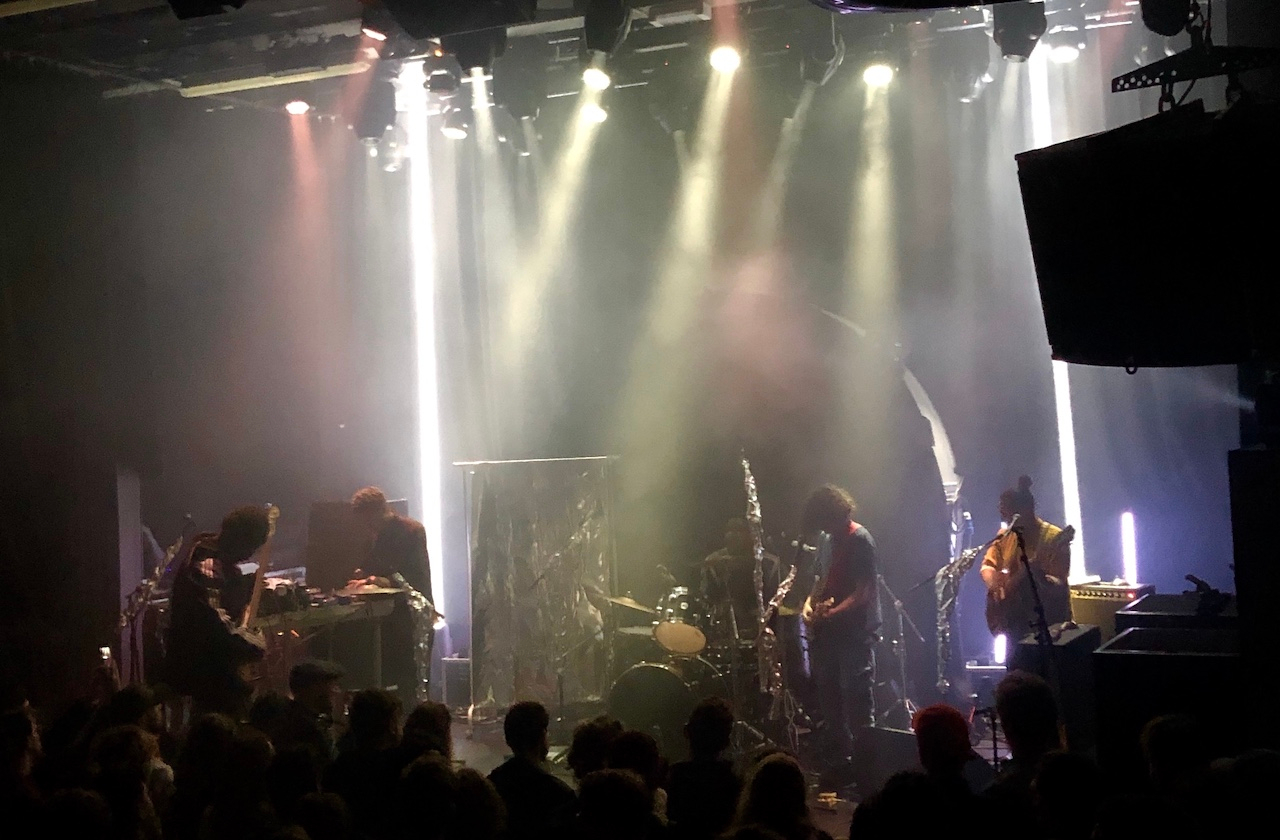 Laurel Halo In his review of Laurel Halo's recent DJ-Kicks mix, Ray Philp wrote that "Halo now seems as confident in the booth as she is in the studio." This line rattled around my head in the early hours of Sunday morning at Paard I, a large rectangular room with a stage and two upper tiers that wrap around the space like in a theatre. The US artist was in devastating form, throwing down percussive bombs heavy on bassweight and personality, tracks like "5 Min feat. C.A.R." by Red Axes and the new one on Version. A set this good would've worked almost anywhere, but it felt particularly powerful in Paard I, magnified by the throbbing soundsystem and spectacular light show. Going by the long applause that rose up when she finished, I wasn't the only one who thought so.
Laurel Halo In his review of Laurel Halo's recent DJ-Kicks mix, Ray Philp wrote that "Halo now seems as confident in the booth as she is in the studio." This line rattled around my head in the early hours of Sunday morning at Paard I, a large rectangular room with a stage and two upper tiers that wrap around the space like in a theatre. The US artist was in devastating form, throwing down percussive bombs heavy on bassweight and personality, tracks like "5 Min feat. C.A.R." by Red Axes and the new one on Version. A set this good would've worked almost anywhere, but it felt particularly powerful in Paard I, magnified by the throbbing soundsystem and spectacular light show. Going by the long applause that rose up when she finished, I wasn't the only one who thought so.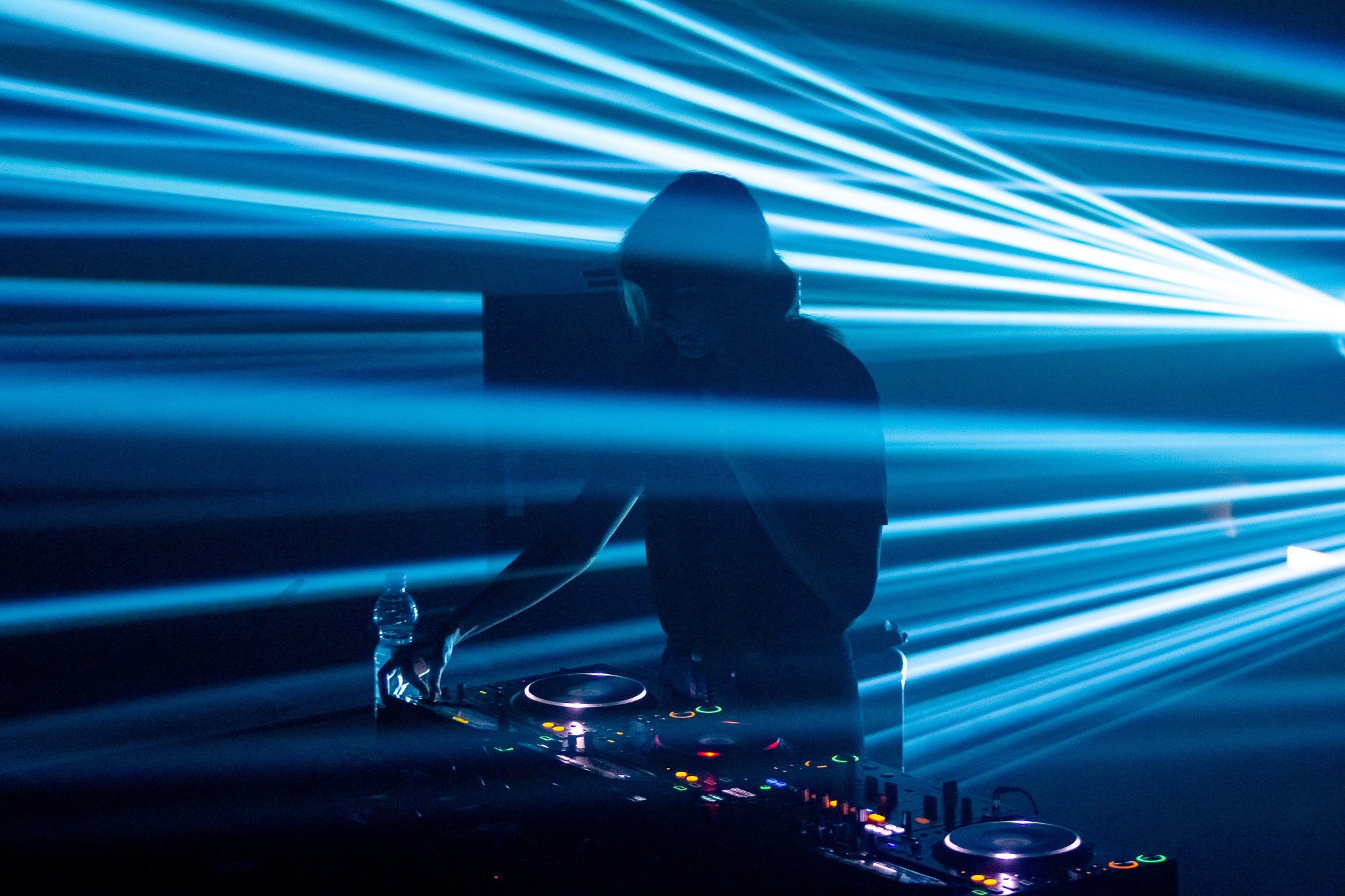 Nicolas Jaar As the clocks jumped forward on Sunday morning, a woman's voice, first in Dutch then in English, thundered over the loudspeaker: "for the next 75 minutes, the stage will be left empty and open to the public." This was the first of the weekend's two Nicolas Jaar performances, a live/DJ hybrid set dubbed "Free 2 Move." Punters rushed to the stairs to take up position beneath a single bright light. Out rolled a booming and distorted house track with fractured drums. But where was Jaar? Eventually, I spotted him, raised high above the floor on the other side of the room, rocking gently before a laptop and wearing a knowing smile. Paard I was a cauldron. The scene later that evening at Grote Kerk, a towering church founded in the 13th century, couldn't have been more different. This time, Jaar, who performed piano and electronics as part of the five-piece ensemble Nicolas Jaar & Group, was more visible, sitting off to one side of the small stage. The church's clay-coloured columns framed the musicians, who played sax, percussion and an ancient Armenian woodwind instrument called a duduk. They performed the world-premiere of a new piece by Jaar, though that makes it sound a lot more exciting than it was. The music was formless, too quiet and aimless to engage with. Afterwards, a friend remarked that it sounded like the group had been warming up their instruments. Maybe Jaar should stick to rocking big rooms.
Nicolas Jaar As the clocks jumped forward on Sunday morning, a woman's voice, first in Dutch then in English, thundered over the loudspeaker: "for the next 75 minutes, the stage will be left empty and open to the public." This was the first of the weekend's two Nicolas Jaar performances, a live/DJ hybrid set dubbed "Free 2 Move." Punters rushed to the stairs to take up position beneath a single bright light. Out rolled a booming and distorted house track with fractured drums. But where was Jaar? Eventually, I spotted him, raised high above the floor on the other side of the room, rocking gently before a laptop and wearing a knowing smile. Paard I was a cauldron. The scene later that evening at Grote Kerk, a towering church founded in the 13th century, couldn't have been more different. This time, Jaar, who performed piano and electronics as part of the five-piece ensemble Nicolas Jaar & Group, was more visible, sitting off to one side of the small stage. The church's clay-coloured columns framed the musicians, who played sax, percussion and an ancient Armenian woodwind instrument called a duduk. They performed the world-premiere of a new piece by Jaar, though that makes it sound a lot more exciting than it was. The music was formless, too quiet and aimless to engage with. Afterwards, a friend remarked that it sounded like the group had been warming up their instruments. Maybe Jaar should stick to rocking big rooms.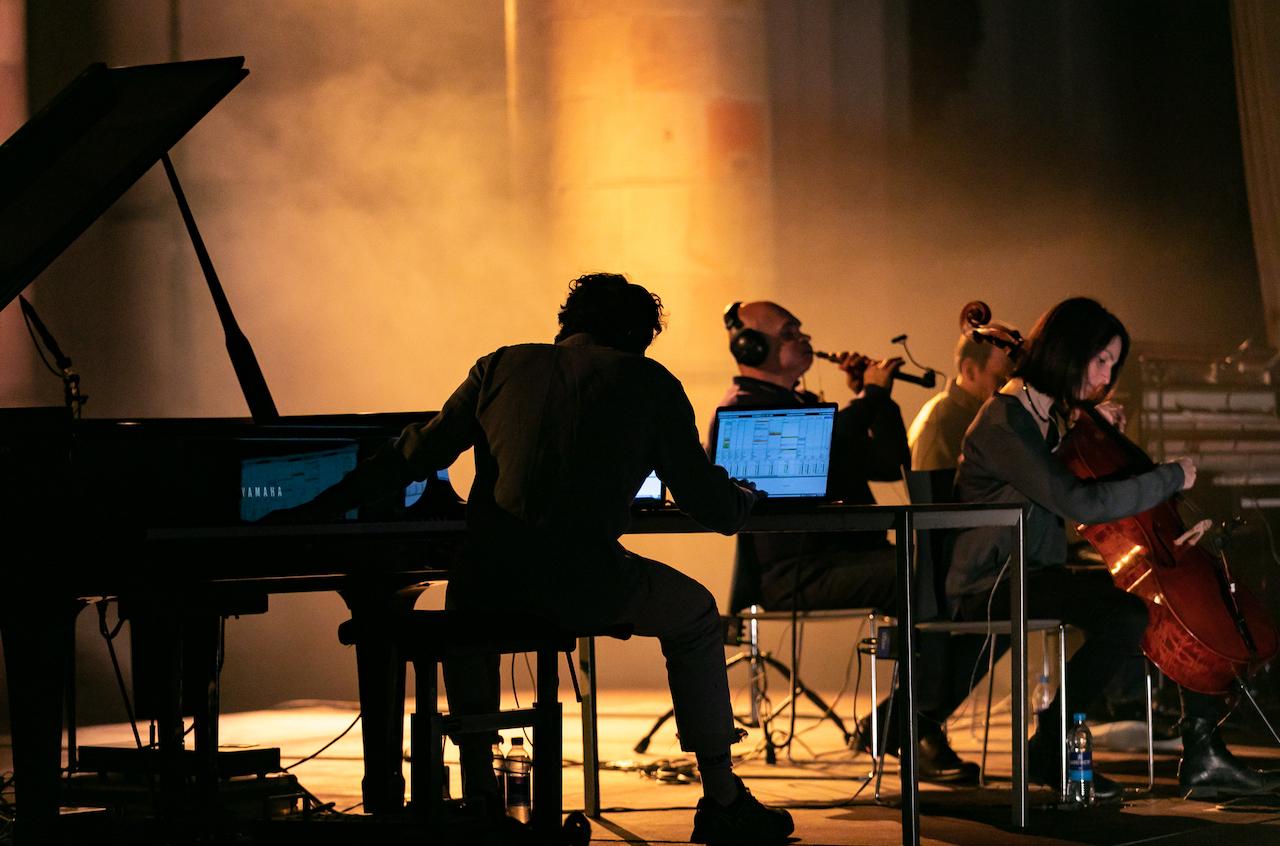 0303
0303